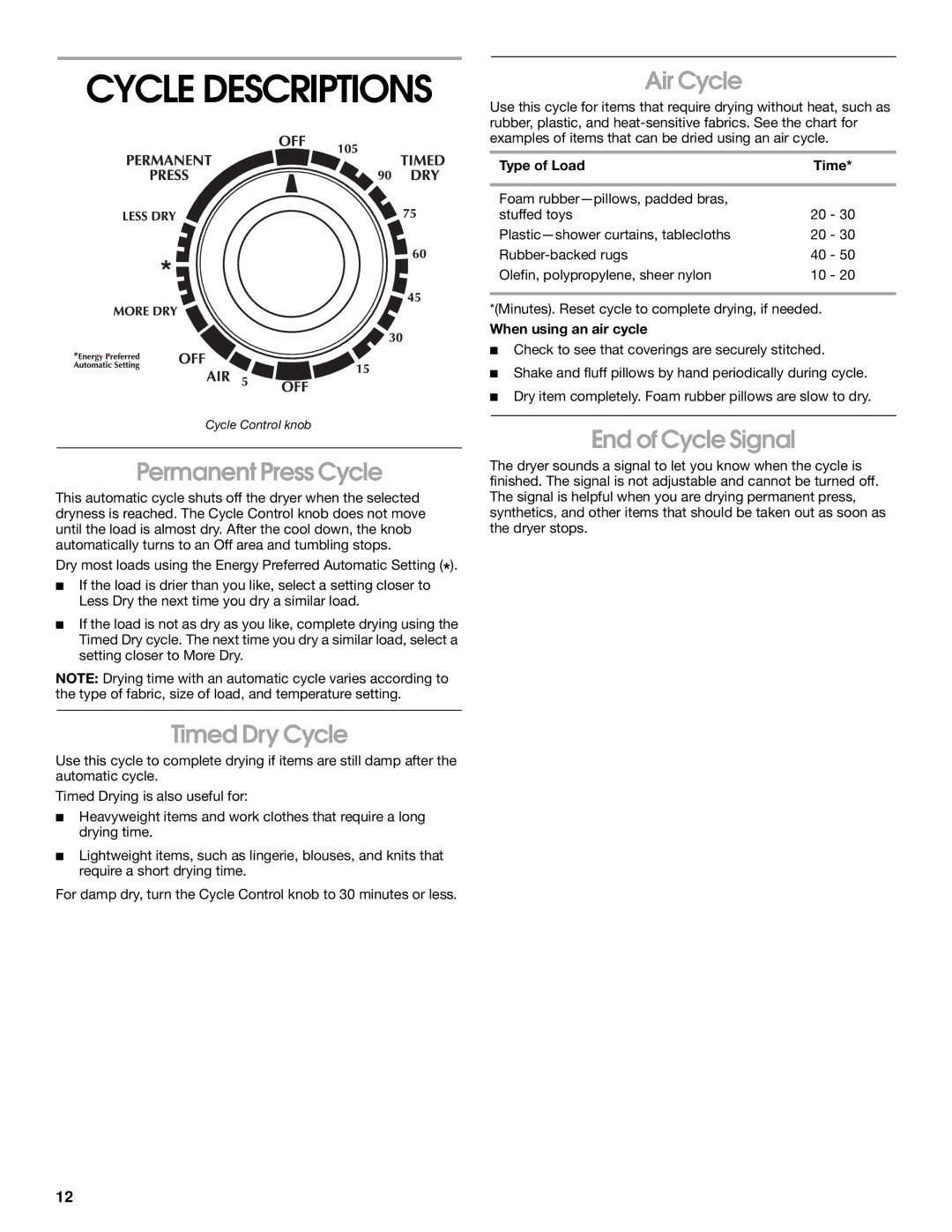CEDC392JQ0 specifications
The Whirlpool CEDC392JQ0 is a highly efficient and reliable electric dryer designed to cater to the diverse laundry needs of modern households. With a sleek design and a range of innovative features, it provides optimal drying performance while ensuring ease of use.One of the standout features of the CEDC392JQ0 is its impressive drying capacity. This model is equipped with a spacious drum that accommodates large loads of laundry, allowing users to dry more clothes in a single cycle. This not only saves time but also increases overall efficiency in laundry management.
The dryer incorporates advanced drying technologies that promote optimal drying results. The AutoDry sensor drying system is a highlight, which monitors the moisture levels in the drum and automatically adjusts drying time accordingly. This feature helps in preventing over-drying, thus preserving the quality of fabrics while significantly reducing energy consumption.
Another notable characteristic of the Whirlpool CEDC392JQ0 is its variety of drying cycles and temperature settings. Users can choose from multiple drying options tailored to different fabric types, ensuring that delicate items are treated with care while heavier fabrics receive the thorough drying they require. The easy-to-use control panel allows for straightforward selections, enhancing the overall user experience.
Convenience is also a key feature of the CEDC392JQ0. The drum is designed with a lint filter that is easy to access and clean, promoting better airflow and dryer efficiency. Additionally, the dryer operates quietly, making it a perfect choice for homes where noise levels need to be minimized.
The design of the CEDC392JQ0 is both functional and aesthetically pleasing, with a modern finish that complements any laundry room. It includes a stackable feature, offering flexibility in space management for those with limited laundry areas.
In summary, the Whirlpool CEDC392JQ0 electric dryer is an exceptional appliance that combines practicality, efficiency, and user-friendly features. Its various drying technologies, generous capacity, and convenient design make it an ideal choice for families looking to enhance their laundry experience while ensuring that clothes are dried with care. Whether it's everyday garments or special fabrics, this dryer stands out as a reliable solution for all drying needs.

